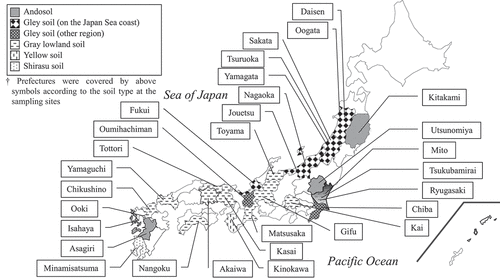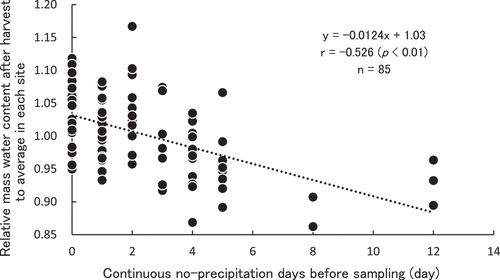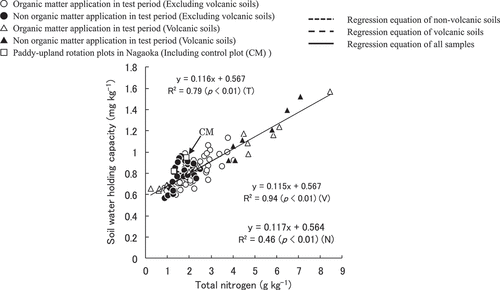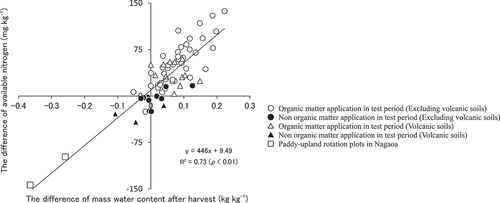Figures & data
Figure 1. Locations of 31 soil sampling sites.

Table 1. Test site (location), soil classification, soil texture, sampling year, total nitrogen of soil (TN), total carbon of soil (TC), available nitrogen of soil (AN), and Nearby AMeDAS in Toyama prefecture
Table 2. Mass water content after harvest of soil (MWH), sampling day, and situation of precipitation at each sites in 3–5 years in Toyama prefecture
Table 3. Mass water content after harvest of soil (MWH), sampling day, and situation of precipitation at each sites in 3 years throughout Japan
Figure 2. Relationships between available nitrogen of soil (AN) and physicochemical properties of soil in control plots. a) Cation exchange capacity vs AN, b) Soil water-holding capacity vs AN (Total n = 30; Gley soil, n = 9; Andosol, n = 4; Shirasu, n = 1; Others (Gray Lowland soil and Yellow Soil), n = 16).

Figure 3. Relationships between available nitrogen of soil (AN) and physicochemical properties of soil in control plots. a) Total nitrogen vs AN, b) Mass water content after harvest vs AN (Total n = 30; Gley soil, n = 9; Andosol, n = 4; Shirasu, n = 1; Others (Gray Lowland soil and Yellow Soil), n = 16).

Figure 4. Influence of organic matter application (OMA), and paddy-upland rotation on the relationships between available nitrogen of soil (AN) and physicochemical properties of soil, a) total nitrogen vs AN, b) mass water content after harvest vs AN.

Figure 5. Relationship between the accumulation of continuous no-precipitation days before sampling and rate against average in mass water content after harvest (MWH) in each site.

Figure 6. Relationship between total nitrogen of soil and soil water holding capacity. (Total n = 100).

Figure 7. Relationship between soil water holding capacity and mass water content after harvest (Total n = 100).

Figure 8. Relationship between the difference of available nitrogen of soil and the difference of mass water content after harvest (the difference obtained by subtracting the control plots from organic matter application, no-fertilizer, no-nitrogen, and paddy–upland rotation test plots). (n = 67).

